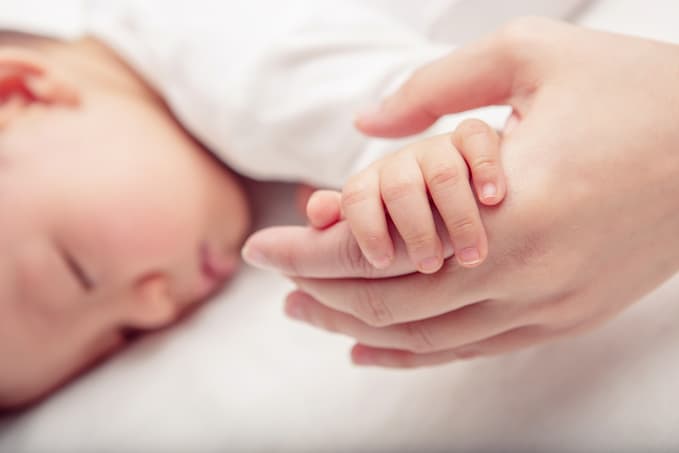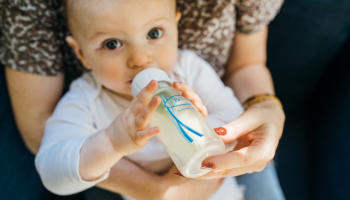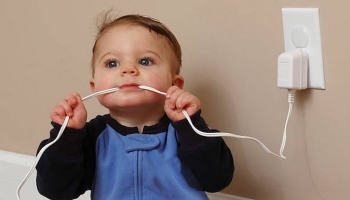
Keeping a baby warm and comfortable at night is crucial for their health and well-being. How to keep babys hands warm at night is a common question many parents grapple with.
One of the key factors in ensuring a good night’s sleep for a baby is to keep their hands warm. However, it can be a challenge for parents to maintain the right temperature for their little one, especially during colder months.
Understanding a baby’s body temperature plays a crucial role in maintaining their comfort and safety. Owing to their higher metabolic rate, babies generate more heat compared to adults.
However, they also dissipate this heat more rapidly, making them susceptible to the effects of colder temperatures. Thus, when it comes to babys hands in cold weather or at night, it’s imperative to keep them warm to ward off any cold-related discomfort.
To help parents keep their baby’s hands and feet warm at night, there are several ways to achieve this. From using mittens and socks to layering clothing, there are various techniques that parents can use to ensure their baby stays warm and comfortable.
Additionally, taking a few precautions such as avoiding overheating and using safe materials can help prevent any accidents or discomfort.
Key Takeaways
- Keeping a baby’s hands warm is crucial for their comfort and well-being.
- Understanding the baby’s body temperature is essential to ensure they are not too hot or too cold.
- Using mittens, socks, and layering clothing are effective ways to keep a baby’s hands warm at night.
Understanding Baby’s Body Temperature

Babies are unable to regulate their body temperature as efficiently as adults. Therefore, it is essential to keep them warm, especially during the night. Understanding how a baby’s body temperature works can help parents take the necessary measures to keep their little ones warm and comfortable.
Regulation of Body Temperature
The human body has a natural mechanism to regulate its temperature, called thermoregulation. Babies have an underdeveloped thermoregulatory system, which means they cannot generate heat as effectively as adults. They rely on external sources of warmth to maintain their normal body temperature.
Core Temperature and Extremities
Babies’ core temperature is the temperature of their vital organs, which should be kept between 36.5 and 37.5 degrees Celsius (97.7 to 99.5 degrees Fahrenheit). However, the temperature of their extremities, such as hands and feet, can be lower than their core temperature.
It is normal for a baby’s hands and feet to feel cooler than the rest of their body. However, if they are too cold, it can be a sign that the baby at cold temperature is not warm enough.
Signs of Overheating and Hypothermia
Overheating and hypothermia are two conditions that can affect a baby’s temperature. Overheating can occur when a baby is dressed too warmly or when the room temperature is too high. Signs of overheating include sweating, flushed skin, rapid breathing, and restlessness.
Hypothermia can occur when a baby is not dressed warmly enough or when the room temperature is too low. Signs of hypothermia include cold hands and feet, shivering, lethargy, and difficulty breathing.
Parents should monitor their baby’s body temperature and look for signs of overheating or hypothermia. They should adjust the baby’s clothing or the room temperature accordingly to maintain a comfortable temperature for the baby.
In summary, understanding a baby’s body temperature is crucial for parents to keep their little ones warm and comfortable. Maintaining the baby’s core temperature, monitoring the temperature of their extremities, and looking for signs of overheating or hypothermia can help parents ensure their baby’s well-being.
Importance of Warm Hands for Baby’s Sleep

Cold Hands at Night
Babies have a harder time regulating their body temperature compared to adults. This is why it is important to ensure that their hands are warm at night.
Newborns with cold feet and hands can be a sign that body temperature is dropping, which can make it difficult for them to fall asleep and stay asleep. When babies are uncomfortable, they tend to fuss and cry, which can be distressing for both the baby and the parents.
Sleep Better with Warm Hands
When babies have warm hands, they are more likely to sleep better and longer. This is because they are more comfortable and relaxed, which allows them to fall asleep faster and stay asleep longer.
When babies are well-rested, they are happier and more alert during the day, which makes for a better overall experience for both the baby and the parents.
To keep your baby’s hands warm at night, there are a few things you can do:
- Dress your baby in warm, comfortable clothing
- Use a sleep sack or swaddle to keep your baby’s hands and body warm
- Use a warm, but not hot, water bottle or heating pad to warm up their bed before putting them down to sleep
- Make sure the room is at a comfortable temperature, not too hot or too cold
In conclusion, keeping your baby’s hands warm at night is important for their sleep and overall well-being. By taking a few simple steps, you can ensure that your baby is comfortable and happy, which will make for a better night’s sleep for everyone.
Ways to Keep Baby’s Hands Warm

Maintaining your baby’s comfort, sleep environment and warmth during the night is crucial, and this includes their small hands. If you’re wondering how to keep your baby warm at night, here are some strategies to ensure your baby’s hands stay warm:
Using Mittens
Mittens are a classic way to keep baby’s hands warm. They come in a variety of materials, from cotton to fleece, and can be found with or without fingers.
Mittens with strings that attach to the baby’s clothing can help prevent them from getting lost. However, it’s important to ensure that the mittens fit properly and aren’t too tight, as this can restrict the poor blood circulation further.
Swaddling
Swaddling is a technique where the baby is wrapped snugly in a blanket, with their arms and legs tucked in. This can help keep the baby warm and cozy, including their hands. However, it’s important to ensure that the swaddle isn’t too tight, as this can restrict movement and breathing.
Using Sleep Sacks
Sleep sacks are wearable blankets that can help keep the baby warm throughout the night. They come in a variety of materials and thicknesses, so it’s important to choose one that is appropriate for the temperature of the your ideal room temperature. Some sleep sacks also have built-in hand covers, which can help keep baby’s hands warm without the need for separate mittens.
Preheat the Crib
One way to ensure that the baby’s sleeping environment is warm is to preheat the crib. This can be done with a hot water bottle or a heating pad, but it’s important to remove these items before placing the baby in the crib. Another option is to use a crib warmer, which is a device that attaches to the bottom of the crib and provides a gentle, consistent heat.
In summary, there are several effective ways to keep baby’s hands warm at night, including using mittens, swaddling, using sleep sacks, and preheating the crib. It’s important to choose the method that works best for the baby and to ensure that they are comfortable and safe throughout the night.
Additional Tips and Precautions
Crib Placement
When trying to keep a baby’s hands warm at night, it is important to consider the placement of the crib. The crib should be placed away from windows, doors, and air conditioning vents to avoid drafts. Additionally, it is important to ensure that the crib is not placed directly under a ceiling fan.
Avoiding Overheating
While it is important to keep a baby warm, it is equally important to avoid overheating. Overheating can be dangerous and increase the risk of SIDS (Sudden Infant Death Syndrome). It is recommended that the room temperature be kept between 68-72°F (20-22°C).
It is also important to dress the baby appropriately for the room temperature. A general rule of thumb is to dress the baby in one more layer than what the caregiver is comfortable wearing. This can include a onesie, footed pajamas, and a sleep sack.
When to Consult a Pediatrician
If a caregiver is having difficulty keeping a baby’s hands warm at night, it may be necessary to consult a pediatrician. The pediatrician can assess the baby’s overall health and provide guidance on how to keep the baby warm without overheating.
Additionally, if a baby’s hands are consistently cold to the touch, it may be a sign of poor circulation. In this case, it is important to consult a pediatrician to rule out cold stress and out any underlying medical conditions.
Remember, keeping a baby’s hands warm at night is important for their comfort and wellbeing. By following these tips and precautions, caregivers can ensure that their baby is warm and safe while they sleep.
Frequently Asked Questions
When should I stop covering my baby’s hands at night?
As babies grow and develop, they become better at regulating their body temperature. As a result, they may not need to have their hands covered at night as they get older. It is generally safe to stop covering your baby’s hands at night once they are around three to four months old.
Is it normal for a baby’s hands to be cold at night?
Indeed, it is normal for a baby’s hands and even their baby’s feet to be cold at night. This is because their blood circulation itself is not yet fully developed, and their hands are often the first body part to feel cold. However, if your baby’s hands are extremely cold or blue, it may be a sign that they are too cold and need an extra layer of clothing.
How can I prevent my baby’s hands from getting cold at night?
There are several things you can do to keep your baby’s hands warm at night. One option is to use a sleep sack or swaddle blanket that covers their arms and hands. Another option is to dress them in warm clothing, such as footed pajamas or a onesie with mittens attached. You can also use a small, lightweight blanket to cover their hands while they sleep.
Should I put mittens on my baby at night to keep their hands warm?
While mittens can be helpful for keeping a baby’s hands warm, they can also be a safety hazard. Mittens can slip off during the night and become a choking hazard, or they can prevent your baby from using their hands to self-soothe. Instead, consider using a sleep sack or swaddle blanket that covers their arms and hands, or dressing them in warm clothing with built-in mittens.








